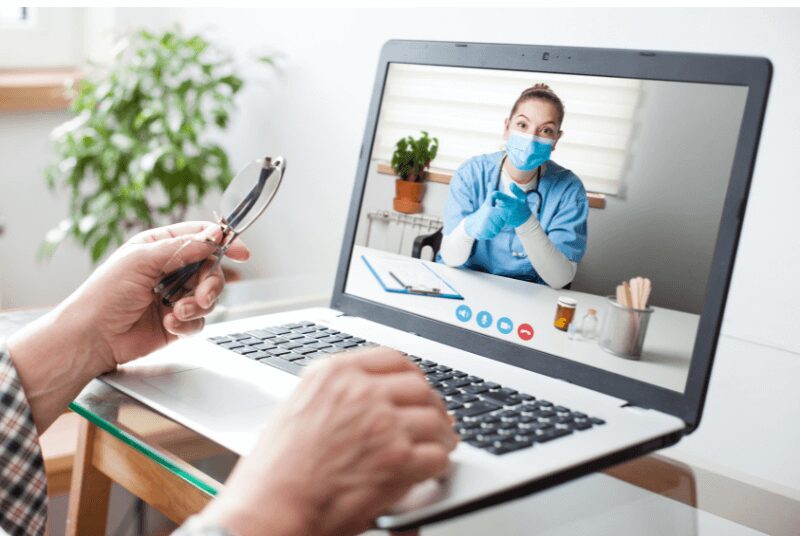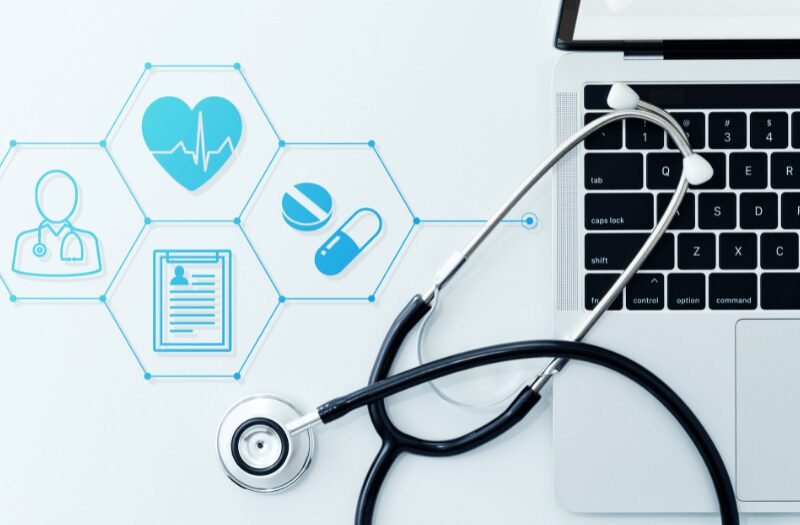
Telemedicine
Telemedicine is the use of technology to provide remote health services to patients [1]. These remote services can include diagnoses, treatment, and educational resources that improve overall health. Telemedicine can be provided using smart devices such as computers, phones, and wearables.

Ways Telemedicine is Delivered
Telemedicine is usually delivered through the use of the internet and telecommunication services [1]. It can also be provided through monitoring services that are used in the patient’s home to obtain real-time data [1]. This allows doctors to be alerted if adverse health effects occur, and allows treatment to be adaptable depending on the patient’s current symptom. Moreover, telemedicine can be used to provide screening services, mental health services, and educational resources to patients. Regardless of the type of delivery, the goal is to provide direct care to the patient that is still similar to the care they would receive in person.
Telehealth vs. Telemedicine
Sometimes telehealth may be confused with telemedicine, however, they are not the same. For instance, telehealth is used broadly to describe remote health services as a whole [1]. However, telemedicine focuses more on specific remote services such as follow-ups, monitoring, consultations, and other resources that utilize video and audio technologies [1].

Benefits of Telemedicine
The first benefit is providing patients with monitoring services remotely [2]. Doctors can obtain vitals and symptoms through the use of remote sensors and wearable devices. Symptoms collected allow diagnostics to be made without the patient needing to be physically at the clinic. This is useful for patients who are older or those that have chronic conditions that require continuous monitoring for more accurate diagnoses. This allows them to have better access to care and improved quality of health [2]. Furthermore, studies have shown that patients show increased support for telemedicine and that it has improved patient satisfaction [2]. The main reason for this is the increased accessibility to improved health care services. Additionally, telemedicine provides collaborative care by letting different providers communicate with one another to provide adaptable care [3]. Overall, telemedicine enables doctors and patients to be more engaged in the process.

Challenges of Telemedicine
The first common challenge is the lack of integration into an effective EHR system which can lead to doctors being overburdened with data [4]. Inversely, there could be a lack of appropriate patient data to provide continued and effective care to patients [4]. This can happen if the patient sees different doctors that do not share information with each other. Missing pieces of information prevent collaboration and whole person care since continued treatment cannot be tracked or provided. Another common issue is the lack of awareness that telemedicine services are being provided [4]. If patients aren’t aware that remote care services are being provided, then they will not be able to benefit from them. Moreover, the higher costs related to having a stable and constant internet connection can deter patients away from receiving certain services [4]. Finally, privacy concerns are a constant challenge since secured connections need to be made.
The Future of Telemedicine
In the future, there will be increased interactions and connections between patients and doctors. Those with rare diseases will be able to receive specialized care regardless of where they are [5]. Furthermore, access and use of wearable technology and other remote services will increase as support for continuous care grows [5]. This will benefit patients living in rural areas as well as those who may have trouble finding quality health services [5]. Moreover, if another pandemic hits, doctors can stop the spread of the disease while still providing quality and connected healthcare services [5].

HITS
HITS provides healthcare management services and works with providers in the development of health informatics tools that promote safe, timely, and secure patient care. We take pride in our services and settle for nothing other than 100% quality solutions for our clients. Having the right team assist with data sharing is crucial to encouraging collaborative and secure care for patients. If you’re looking for the right team, HITS is it! You can reach out to us directly at info@healthitsol.com. Check out this link if you’re interested in having a 15-minute consultation with us: https://bit.ly/3RLsRXR.
References
- https://chironhealth.com/telemedicine/what-is-telemedicine/
- https://evisit.com/resources/telemedicine-definition
- https://www.fiercehealthcare.com/sponsored/perspectives-future-whole-person-virtual-care
- https://telemedicine.arizona.edu/blog/7-telemedicine-concerns-and-how-overcome-them
- https://insights.omnia-health.com/technology/telemedicine-interconnected-future-healthcare